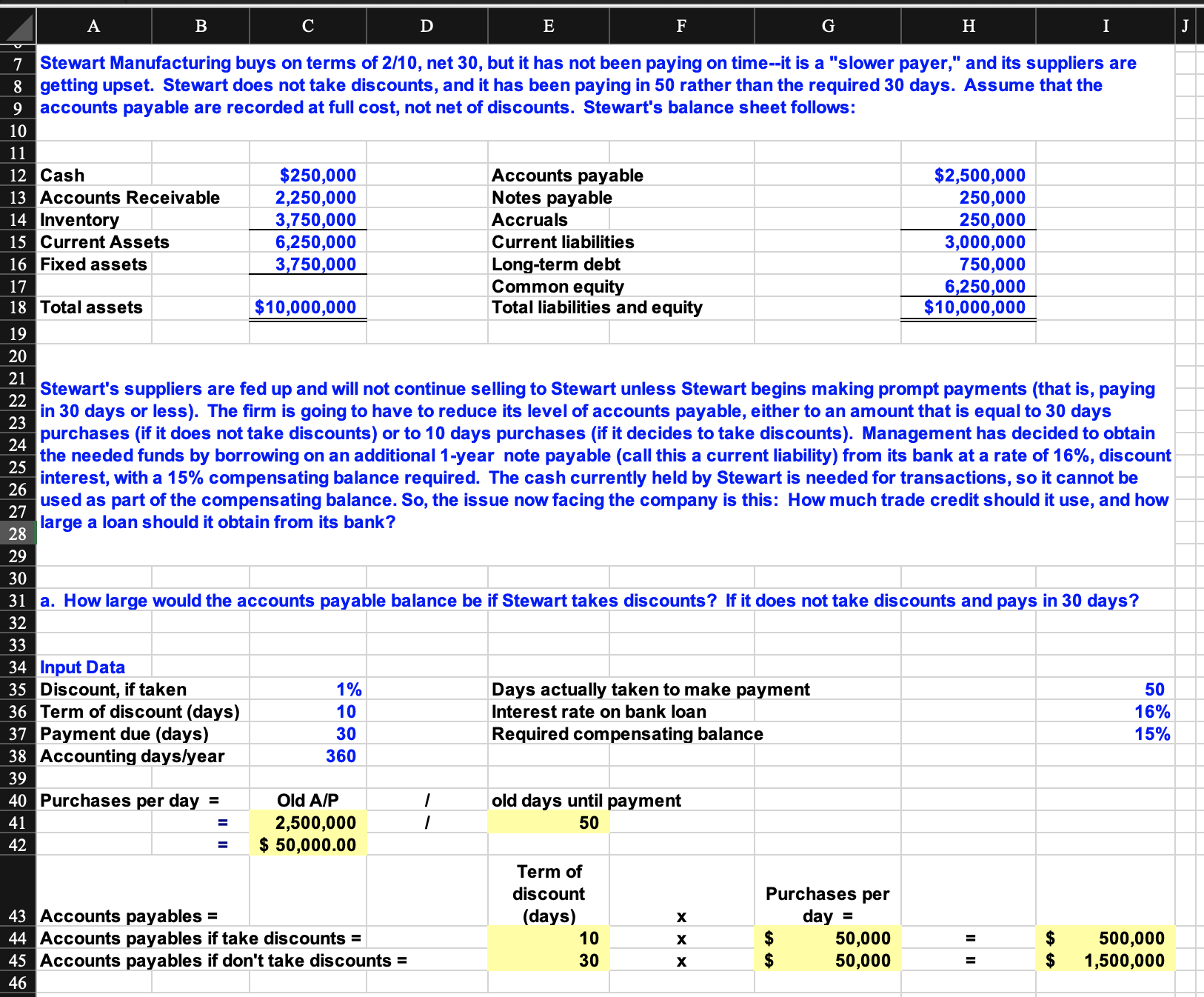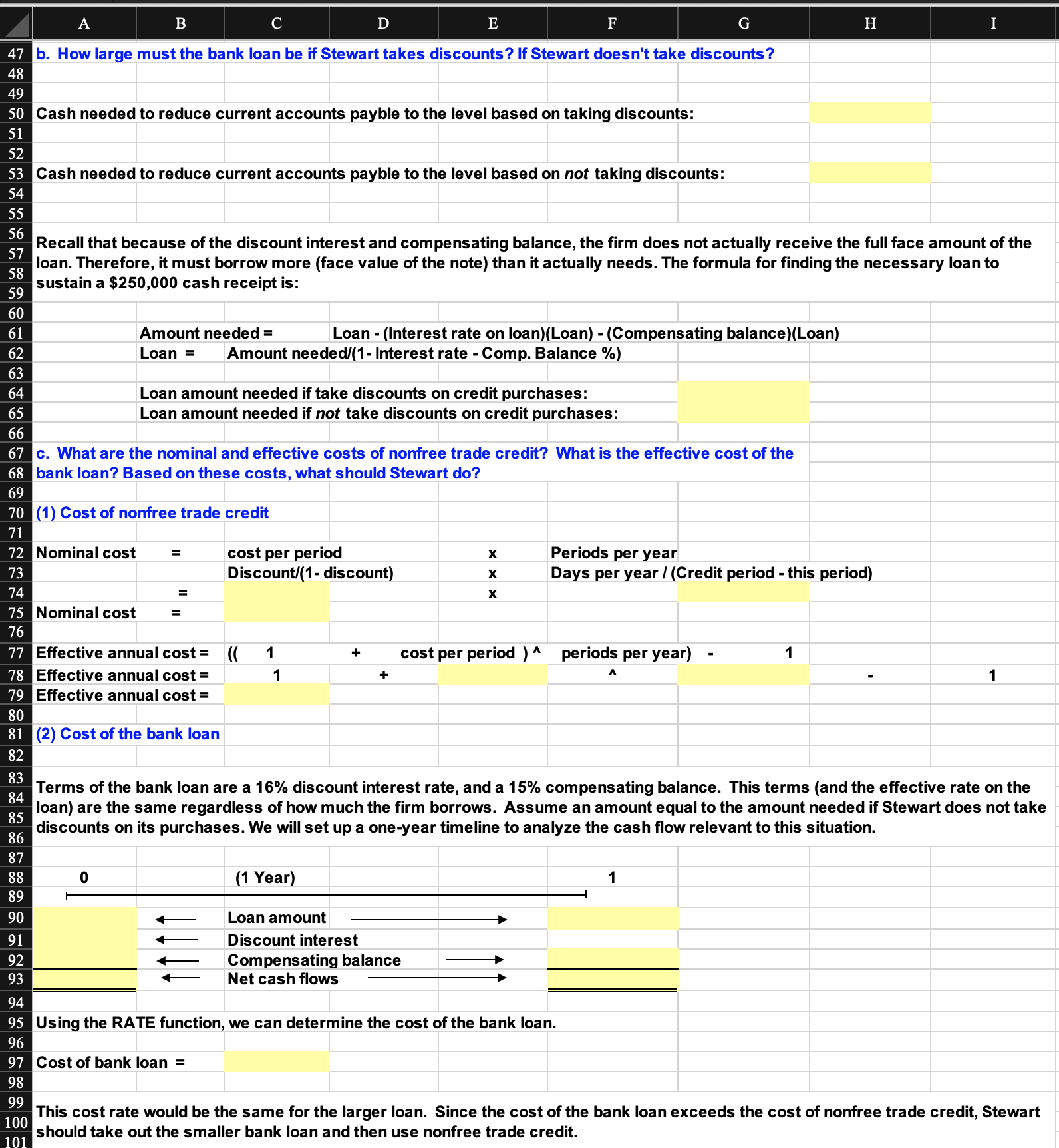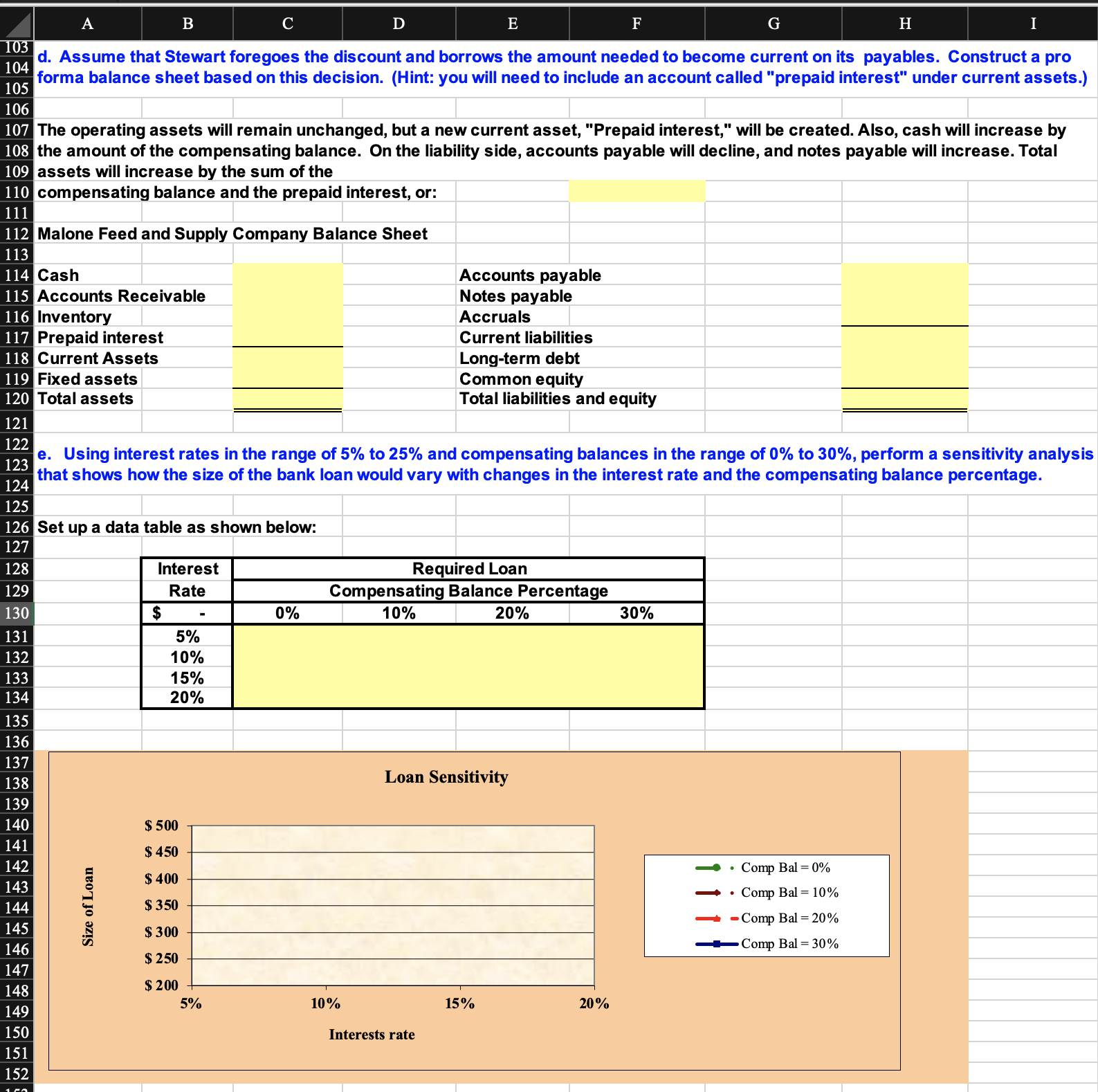Answered step by step
Verified Expert Solution
Question
1 Approved Answer
PART A IS COMPLETE AND CORRECT ALREADY A B C D E F G H I J 7 Stewart Manufacturing buys on terms of 2/10,



PART A IS COMPLETE AND CORRECT ALREADY
A B C D E F G H I J 7 Stewart Manufacturing buys on terms of 2/10, net 30 , but it has not been paying on time--it is a "slower payer," and its suppliers are 8 getting upset. Stewart does not take discounts, and it has been paying in 50 rather than the required 30 days. Assume that the 9 accounts payable are recorded at full cost, not net of discounts. Stewart's balance sheet follows: 10 20 21 Stewart's suppliers are fed up and will not continue selling to Stewart unless Stewart begins making prompt payments (that is, paying 22 in 30 days or less). The firm is going to have to reduce its level of accounts payable, either to an amount that is equal to 30 days 23 purchases (if it does not take discounts) or to 10 days purchases (if it decides to take discounts). Management has decided to obtain the needed funds by borrowing on an additional 1-year note payable (call this a current liability) from its bank at a rate of 16%, discount interest, with a 15% compensating balance required. The cash currently held by Stewart is needed for transactions, so it cannot be used as part of the compensating balance. So, the issue now facing the company is this: How much trade credit should it use, and how large a loan should it obtain from its bank? 31 a. How large would the accounts payable balance be if Stewart takes discounts? If it does not take discounts and pays in 30 days? 32 33 34 Input Data 35 Discount, if taken 36 Term of discount (days) 37 Payment due (days) 38 Accounting days/year 39 40 Purchases per day = 41 42 43 Accounts payables = 44 Accounts payables if take discounts = 45 Accounts payables if don't take discounts = Days actually taken to make payment Interest rate on bank loan Required compensating balance old days until payment 50 Term of discount (days) 10 30 Purchases per day = 46 50 16% 15% 50,000 500,000 1,500,000 A B C D E F G H I 47 b. How large must the bank loan be if Stewart takes discounts? If Stewart doesn't take discounts? Cash needed to reduce current accounts payble to the level based on taking discounts: Cash needed to reduce current accounts payble to the level based on not taking discounts: Recall that because of the discount interest and compensating balance, the firm does not actually receive the full face amount of the loan. Therefore, it must borrow more (face value of the note) than it actually needs. The formula for finding the necessary loan to sustain a $250,000 cash receipt is: Amount needed = Loan - (Interest rate on loan)(Loan) ( Compensating balance)(Loan) Loan = Amount needed /(1 Interest rate - Comp. Balance \%) Loan amount needed if take discounts on credit purchases: Loan amount needed if not take discounts on credit purchases: c. What are the nominal and effective costs of nonfree trade credit? What is the effective cost of the bank loan? Based on these costs, what should Stewart do? (1) Cost of nonfree trade credit 71 72 73 74 Nominal cost = cost per period = Discount/(1- discount) x Periods per year Nominal cost = Effective annual cost = Effective annual cost = (2) Cost of the bank loan Terms of the bank loan are a 16% discount interest rate, and a 15% compensating balance. This terms (and the effective rate on the loan) are the same regardless of how much the firm borrows. Assume an amount equal to the amount needed if Stewart does not take discounts on its purchases. We will set up a one-year timeline to analyze the cash flow relevant to this situation. 87 88 89 90 91 92 93 94 95 Using the RATE function, we can determine the cost of the bank loan. 96 97 Cost of bank loan = 98 99 100 This cost rate would be the same for the larger loan. Since the cost of the bank loan exceeds the cost of nonfree trade credit, Stewart should take out the smaller bank loan and then use nonfree trade credit. d. Assume that Stewart foregoes the discount and borrows the amount needed to become current on its payables. Construct a pro forma balance sheet based on this decision. (Hint: you will need to include an account called "prepaid interest" under current assets.) The operating assets will remain unchanged, but a new current asset, "Prepaid interest," will be created. Also, cash will increase by the amount of the compensating balance. On the liability side, accounts payable will decline, and notes payable will increase. Total assets will increase bv the sum of the e. Using interest rates in the range of 5% to 25% and compensating balances in the range of 0% to 30%, perform a sensitivity analysis that shows how the size of the bank loan would vary with changes in the interest rate and the compensating balance percentage. Set up a data table as shown below: Loan SensitivityStep by Step Solution
There are 3 Steps involved in it
Step: 1

Get Instant Access to Expert-Tailored Solutions
See step-by-step solutions with expert insights and AI powered tools for academic success
Step: 2

Step: 3

Ace Your Homework with AI
Get the answers you need in no time with our AI-driven, step-by-step assistance
Get Started


